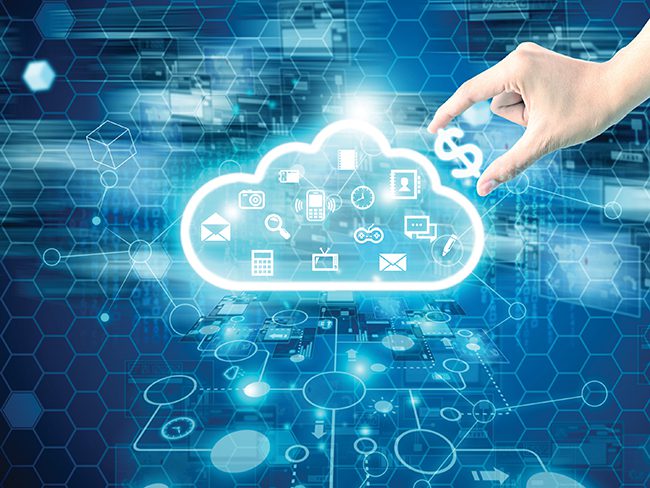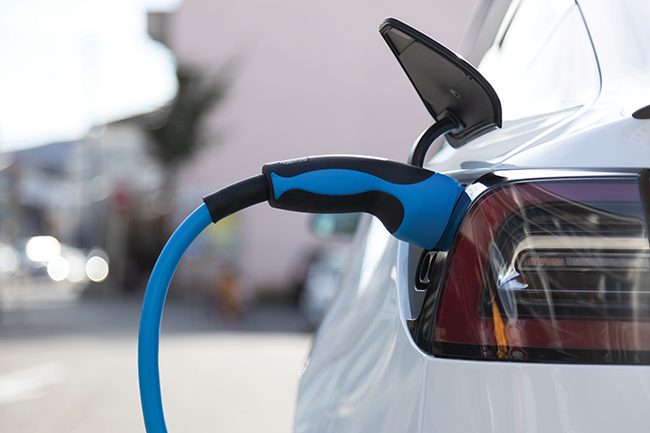Utilizing Data Is Key for Top Grid, Power Plant Performance
Credit to Author: Darrell Proctor| Date: Mon, 01 May 2023 04:14:03 +0000

The wealth of data available for today’s power generators is supporting more efficient electricity production, and more reliability and resiliency for the grid.
There are many reasons utilities and power plant operators need to enable advanced analytics to better utilize data. It could start with better load forecasting with real-time updates, supporting both power plant operations and the electricity grid.
Data also is important for operational efficiency, including the ability to be more proactive with maintenance, which can include ways to better anticipate threats to system performance and reliability. Detecting anomalies, along with stronger outage prediction and analysis of system loads, also is supported by the gathering of data.
 |
1. Utilities around the world are interacting with customers in more ways than ever, using connected devices and communications technologies to help power generators, grid operators, and electricity consumers gain insight into how and when energy is being used. Source: Shutterstock |
Then there’s the use of data as part of customer engagement, including targeting of information for specific users, as well as revenue management (Figure 1). That’s more important today as utilities install smart meters, smart thermostats, and other technologies designed to provide better insight into where and when electricity is being used.
“The energy transition is creating a smarter, more-informed customer who has evolved past ‘an envelope in the mailbox’ and now determines their energy needs across price, environmental, and reliability platforms,” said Trey Thornton, EY Americas Power and Utilities Leader. Thornton told POWER his group calls this customer an “omnisumer.”
Said Thornton, “This underscores the sense of urgency for power and utility companies in becoming more data-driven. Our research found that more than 40% of U.S. consumers are thinking about purchasing rooftop solar panels and looking at electric vehicles (EVs), and 89% want to learn more about renewable energy and self-generation in order to reduce reliance on other markets, fossil fuels, and energy providers. The more engaged customers become in understanding and managing their power and energy needs, the more interaction and mutual education will be required of the utility.”
Don McPhail, vice president of Product at Uplight, a group that connects power providers with their customers in support of clean energy initiatives, said, “With approximately 70% of electric customers in the U.S. now having advanced metering infrastructure [AMI], utilities have begun using these to understand the energy flows and state of the power system, and the grid edge. As the role of customers becomes more important in delivering load flexibility in the power system, utilities are using this AMI data to provide accurate forecasts and verification of the load shift occurring during demand response [DR] events, making the aggregation of these customer programs as bankable as a centralized natural gas peaking plant in their grid planning and operations.”
Integrating DERs
Data utilization is important for both centralized and decentralized power generation, particularly as more distributed energy resources (DERs) are added to the grid. Balancing the power grid, as the use of energy storage and renewable energy continues to grow, requires the use of data. The same is true of programs aligned with DR and energy efficiency.
“More than ever, utilities are looking to leverage hardware that increasingly exists in the customers’ side of the meter,” said McPhail. “The data from distributed energy resources, ranging from smart thermostats to water heaters, to EV chargers and the EVs themselves, gives them greater understanding of the adoption of these smart/connected loads, how they are being used by customers, their potential as a load flexibility resource [today and in forward-looking forecasts], and in aggregate provide utilities a circuit or feeder-level view of the distribution grid’s energy flow, which they couldn’t get from traditional grid monitoring alone.”
McPhail told POWER, “As the grid capacity grows to accommodate all this new load, grid edge flexibility becomes critical and could account for up to 20% of the overall grid load, according to estimates by Brattle Group.”
Data from equipment both at a power plant and in the field is helping utilities make operational decisions, which becomes more important as power reliability and resiliency are prioritized. “From an operational perspective, utility companies depend on data to understand root causes of outages, plan for peak energy demands despite volatile weather, get ahead of asset maintenance, integrate renewables into the generation mix, and mitigate damage to the grid by more quickly knowing the impact of natural disasters,” said Michael Juchno, a partner at EY who leads the firm’s Data and Analytics practice.
Juchno told POWER, “Additionally, in this era of energy transition, data can bring deeper understanding of customer needs more than ever before for utilities as they look to better anticipate and fulfill customer needs. As utilities in every region struggle with dynamic weather patterns, many of which are unprecedented, data can help the utility understand the facts and build trust as customer complaints rise.”
Making Connections
Different technologies and devices have emerged to support an interactive relationship among grid operators, utilities, and electricity customers. These include computerized controls in homes, connected so appliances can respond to signals from an energy provider to minimize electricity use when the power grid is stressed from high demand. These controls also can shift power use in homes and commercial buildings to times when power is available at a lower cost.
Mike Yellin, an executive with Gridspertise, an Enel Group company that supports digitization of electricity grids, told POWER, “It’s very important to have fast response times on these devices, to encourage their use.” Yellin, in an interview with POWER at the DISTRIBUTECH conference in San Diego, California, in February, said, “Augmented reality, virtual reality, GIS [geographic information systems] data … field workers can find critical information about where the devices are. You can download and share it, and if you have utilities coming from different areas, you can share the GIS data.” Yellin noted that the sharing capability is of particular importance at times when multiple utilities are working together to restore power after natural or other disasters.
Those technologies also are important to support the integration of renewable energy resources to the power grid, where reliability, resiliency, and stability are of utmost importance. “It’s tools that can be used on the transmission grid … it’s really meant for the distribution grid,” said Yellin. “It has the best tools to deal with distributed energy resources. It supports how we deal with line upgrades, substation upgrades, how we upgrade lines and substations to deal with new loads.”
Yellin continued: “These tools are designed for utilities. They deal with things happening to the grid, but not controlled by the grid operator. It’s about how you give them tools, and a lot more data. You can’t deal with it through traditional SCADA [supervisory control and data acquisition]. Edge computing is designed to be much more real time, pulling in truly real-time information. We can pull information from different sources. We can address the DER issue, and we can address other issues, dealing with multiple problems utilities are facing. Edge-computing devices can allow a single solution to address multiple problems at the same time.”
Automated Grid Information
Julian Durand, vice president, Product Management, and chief information security officer for Intertrust, said, “Essentially what we do, within the distributed energy space, is work with devices, industrial control systems, renewables, promoting data integrity. We have a new networking protocol, optimized for IoT [Internet of Things] systems, and self-organizing mesh networks … from the deep edge of the grid to our command platform.”
 |
2. DigiKoo, a subsidiary of European utility E.ON, used Intertrust to create an automated grid information service. It enables grid operators to use the information to help in siting electric vehicle (EV) charging infrastructure. Source: Envato Elements |
DigiKoo, a subsidiary of European utility E. ON, is using Intertrust to create an automated grid information access service. The service enables distribution service operators in Germany to have quick access to grid information, which in turn supports the siting and construction of new EV charging stations (Figure 2). Intertrust also supports virtual power plants (VPPs), and earlier this year entered a partnership with South Korea’s EIPGRID to support that company’s VPPs.
“We have several VPP use cases,” said Durand, noting such installations are poised for growth as the residential sector becomes more involved with DERs. “If a home has an electric vehicle, that’s a perfect example. We can use data to take some of the [charging] demand off the grid during peak hours.”
Durand said his group also works “with smaller [energy] providers, solar farms, wind farms. We collect data coming from sensors from the turbine, we can bring in data from equipment with different manufacturers. We offer a faster time to AI [artificial intelligence].”
Sameer Kalra, director of Operational Technology Products for Oracle Energy and Water, told POWER: “The complexity of data streams is continually intensifying, creating demand from utility operators for better integration and visibility. Today’s SCADA technology needs to scale to see everything from baseload generators and intermittent renewable power to microgrids and IoT devices in homes, with plenty of DERs in between. SCADA is now combined with Advanced Distribution Management Systems [ADMS] that provide what we call a single pane of glass for operators. We fully expect the dynamics of maintaining reliability to become exponentially more challenging with the growth of DERs, electric vehicles, home batteries, and more.”
With more data from different types of power equipment available, utilities know the importance of efficiently using that information. “As the grid transforms toward decarbonization, there is a fundamental shift, making it more customer-centric as it bends toward being more sustainable and more resilient through grid edge flexibility,” said McPhail. “Data, and the insights derived from it, will underpin how effective utilities are in creating positive, beneficial engagements with their customers. It’s an opportunity 100 years in the making with significant implications, so we’ve got to get it right to ensure positive outcomes for energy customers, utilities, and the grid overall.”
—Darrell Proctor is a senior associate editor for POWER (@POWERmagazine).
The post Utilizing Data Is Key for Top Grid, Power Plant Performance appeared first on POWER Magazine.